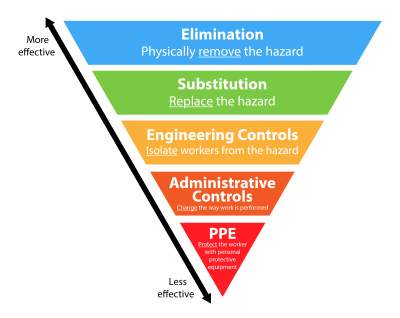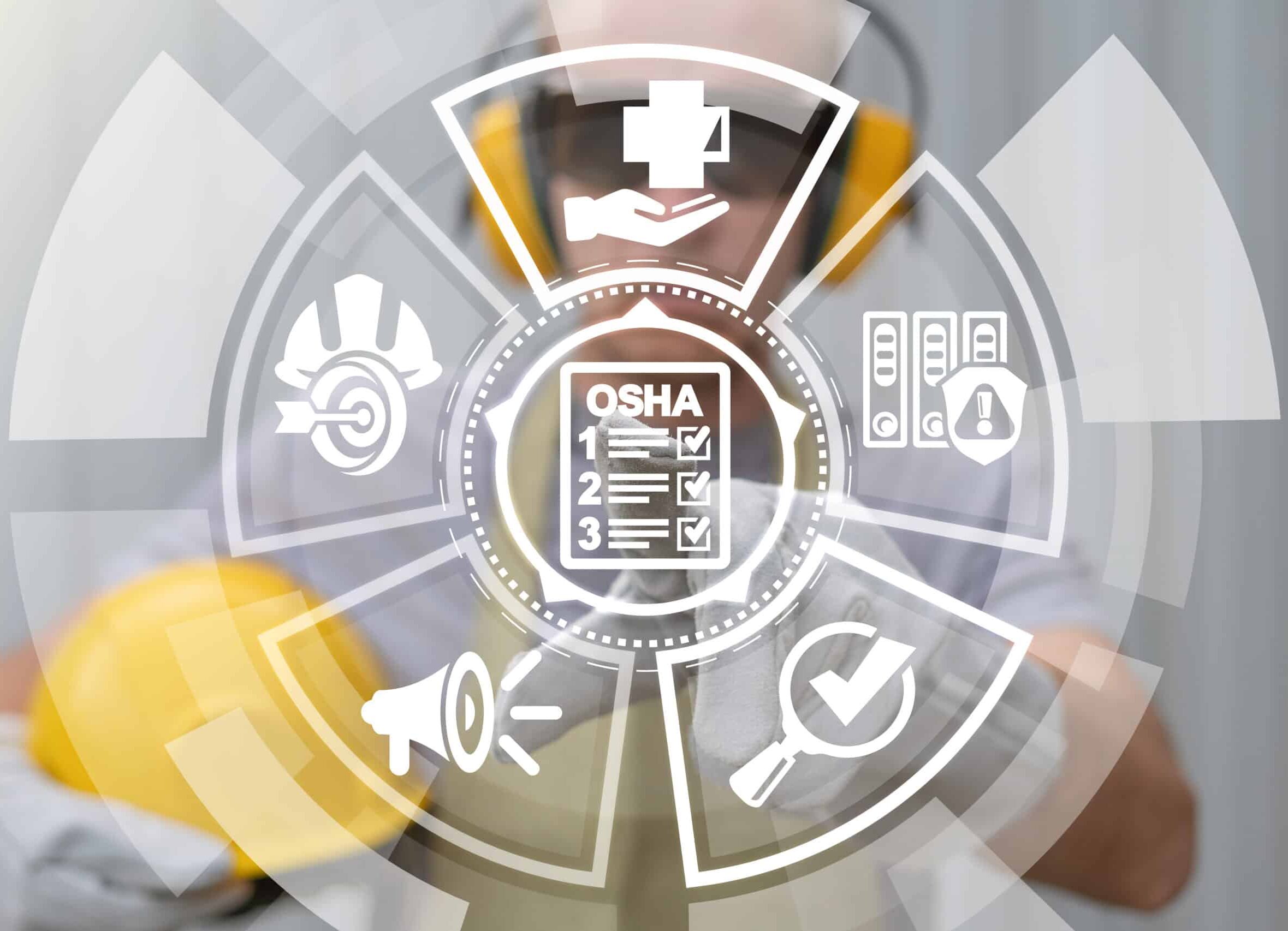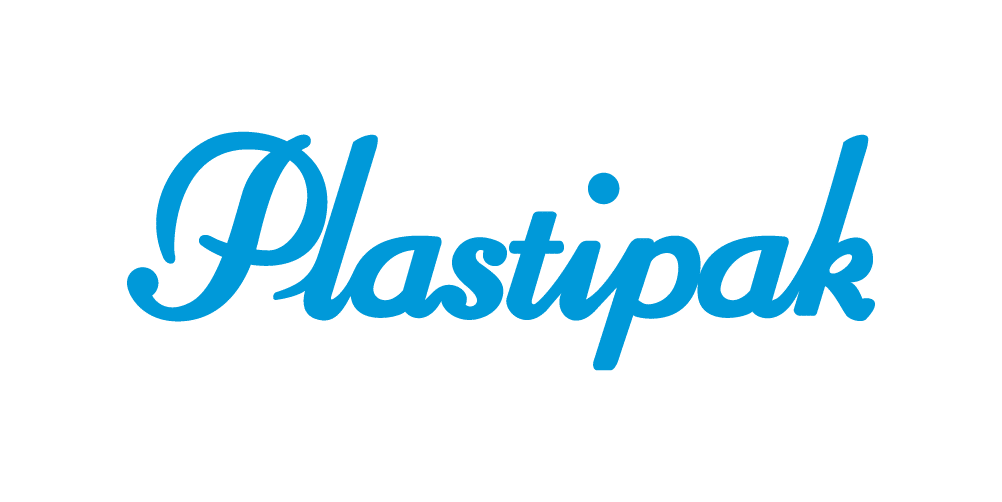September 20, 2024 8 min read

Complete Employee Safety Training Checklist
Industry:
Solution:

Providing a robust safety training program for your organization is not only a regulatory obligation, but an essential aspect of operational success and improving employee wellbeing. With various factors to consider in this process, it can be easy to get overwhelmed or skip out on important steps. In this blog, we’ll provide a comprehensive employee safety training checklist to ensure that your employees are receiving the online training they need, as well as some tips and resources to improve your workplace training overall.
Customizable Employee Safety Training Checklist
An employee safety training checklist serves as a structured tool that guides the training process, ensuring that all essential safety protocols are covered. Whether you’re creating a new hire safety training checklist or updating existing training materials, this customizable template will help you meet your organization’s specific needs.
While a checklist is useful and can save you time, it’s important to also think of your organization’s specific safety and training needs. Use the checklist below as a starting point and then make it your own!
Safety Training Checklist: Building the Foundations of Your Program
Measure your starting point. Do you have internal training and safety management data to set internal benchmarks. This will help with step 2 and ensure your safety training program is addressing your company’s challenges.
- Set training goals. Identify what safety and training KPIs you need to meet and how your program is going to help get you there.
- Audit your existing training program. Are you relying on manual tracking? Do you only use in-person training? What feedback do your employees have on your current processes? Ask yourself these questions and identify areas where you could be more efficient and effective.
- Assess Learning Management System (LMS) providers. If you currently don’t use an LMS, it’s probably time to consider one. These tools streamline manual processes and make tracking completions easier, which is critical for things like mandated safety training. And if you do already use an LMS, assess if it’s doing everything you need. Does it offer the ability to assess employees or provide automated growth pathways? Does it integrate with your EHS Management solution?
- Assess Online Training Providers. If you rely heavily on in-person safety training, odds are, you’re not able to do everything you want to. Online training from companies like Vector Solutions make it easier to provide basic training, refresher training, and more. This lets you create a Blended Learning strategy where all in-person training can be more intentional and company-specific.
Safety Training Checklist: Administering Training
- Onboarding. Safety training should be part of your onboarding and employee orientation process. This helps to immediately establish your Safety Culture and ensure employees have good safety habits from day one.
- Annual Training. Annual safety training is key to ensure you are compliant and minimizing hazards and incidents in the workplace. Using engaging online training and a blend of in-person sessions to reinforce that training is a great way to make annual training more effective.
- Refresher Training. Refresher or just-in-time training are useful as corrective actions after incidents. Safety Microlearning courses are a great way to reinforce best practices while reducing downtime from pulling employees out of work.
- Safety Management Training. When you promote employees to a more senior position, it’s important to reinforce safety best practices and ensure they are compliant with OSHA regulations. While safety is everyone’s responsibility, it’s important to train future leaders on how their role in maintaining a safe workplace will evolve in their new role. Consider Learning Paths to make this training process simple!
Safety Training Checklist: Important Courses to Consider
The safety training that your organization needs to provide will depend on your industry and the specifics of your organization. Introducing a new hire safety training checklist in your orientation process can help cover key topics, including:
- New Employee Safety Orientation
- Personal Protective Equipment
- Electrical Safety
- Fall Prevention and Protection
- OSHA Struck-By and Caught-Between Accidents
- View the Full Library

How to Identify the Right Objectives for Your Safety Training Program
Defining your objectives for safety training is a critical first step. But determining the right goals can be easier said than done.
Ask yourself questions like: What specific safety procedures or protocols do my employees need to learn? What are our current challenges when it comes to safety?
To aid in this process, take advantage of tools such as employee skills assessments. These assessments pinpoint exactly what training your workforce needs and can have many other benefits like:
- Pre-hire assessments to hire the right talent
- Improved onboarding speed and effectiveness
- Easier identification of skill gaps, such as a lack of safety knowledge
- The ability to create more customized training plans for each employee
Evaluating your employees’ understanding of the material is critical to developing a solid safety training plan. By implementing resources such as our Competency Assessment Tool, you can reinforce key points and identify areas where further training might be needed in your workforce.
Vector Solutions’ Competency Assessment Tool
Use this tool to conduct pre-assessments for job applicants, improve onboarding, identify skills gaps, and more.
Learn More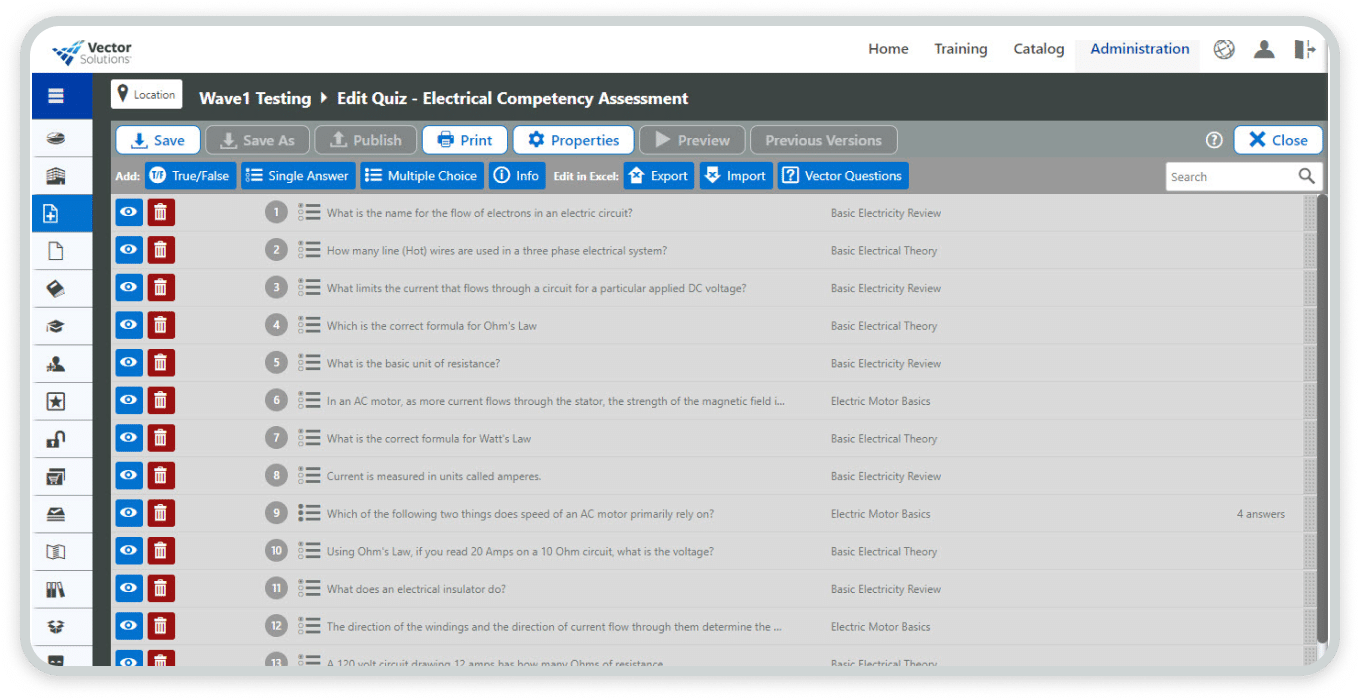
How to Implement Online Training
Did you know that companies that invest in employee training see 11% higher profits than those that do not? Moreover, 80% of companies believe that more training helps to meet company goals.
Due to these numbers, this step is arguably the most important of your employee safety training checklist. In an age when everything revolves around digital solutions, it’s essential to create a strong online training regimen for your workforce. This is typically split into a few key parts:
- Learning Management System (LMS)
- eLearning Courses
- Instructor-Led Training
In the following sections, we’ll dive a bit deeper into each of these components and explain how you can implement them in your company.
How to Select a Learning Management System
A learning management system, or LMS, is a web-based software application for training management and administration. This tool is the industry standard way to deliver online training. An LMS has tracking and recordkeeping capabilities, which are helpful for all types of training: both online and offline.
Adopting a comprehensive LMS for your company is essential to fulfilling this step. Typical LMS features include:
- Divide your workforce by organizational units
- Create training content
- Assign training
- Notify employees of training assignments
- Grant credit for completing training
- Store those training completion records
- Run reports to see who’s done and not done with training
- Training analytics and dashboards
Elevate Online Training Management Across Your Organization
Explore how you can deliver exceptional training content tailored to keep your workforce safe and improve performance.
Learn More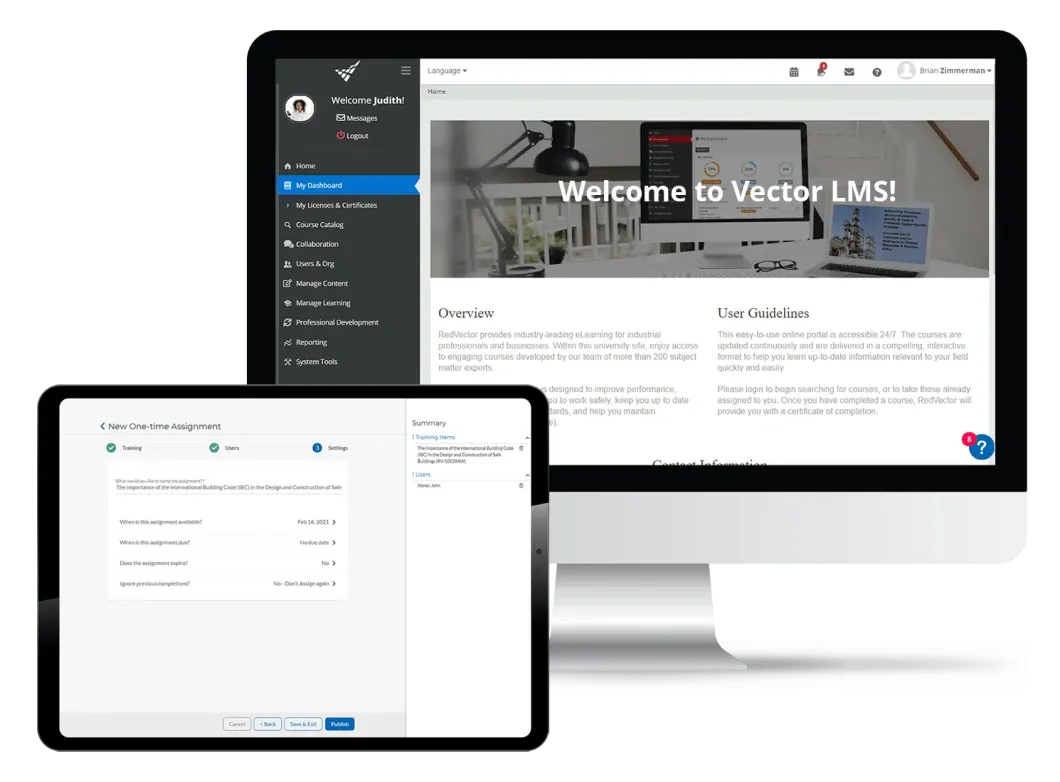
How to Create a Blended Learning Strategy
Adopting a blended learning solution is one of the best ways to enhance your employee safety training system and meet company objectives.
A blended learning solution is an educational approach that combines instructor-led training (ILT) with eLearning courses, mixing the benefits of each training method. Hybrid learning will improve your organization by:
- Allowing employees to learn at their own pace
- Saving money and resources
- Increasing knowledge retention
- And more!
Implementing a blended learning solution is critical to helping organizations achieve their business objectives. Explore more with the link below.
Blended Learning Solutions Guide
Learn how to create a modern training strategy that meets the needs of your workforce
Download Guide
The Benefits of Online Safety Training
Incorporating components such as an LMS and eLearning courses into your safety training program can offer several advantages, such as:
- Accessibility. Online training can be easily accessed from electronics such as tablets, making it easier for employees to complete training at their convenience.
- Real-time updates. Digital platforms allow for instant updates and modifications, ensuring that the training reflects the most current safety procedures.
- Data collection. Digital tools often come with built-in analytics and reporting features, enabling you to track training progress and generate detailed reports.
- Integration. Online resources can be integrated with other training and management systems, providing a more cohesive approach to employee development and safety management.
How Vector Solutions Helps with Employee Safety Training
“I would say the biggest benefit the solution has helped us achieve is to remain on the leading edge of our industry as a firm of choice because we invest in the development of our people and practice.”
– Training and Development Manager
At Vector Solutions, we pride ourselves on providing companies with quality, engaging training solutions to improve workplace productivity and remain at the competitive edge of their industries.
With our comprehensive Learning Management System (LMS), you can combine unique online training management software functionalities to streamline assigning, tracking, and reporting. Explore how to ensure your workforce stays prepared, compliant, and protected.
Benefits include:
- Tracking and reporting on training goals
- Deploying ready-to-use courses
- Reduced liability with comprehensive records
- Customized platform to meet your needs
- Efficiency with creating competency assessments
Our modern LMS, combined with thorough eLearning courses, will ensure your workforce stays prepared, compliant, and protected.
Ready to get started? Request a demo and learn more today.







